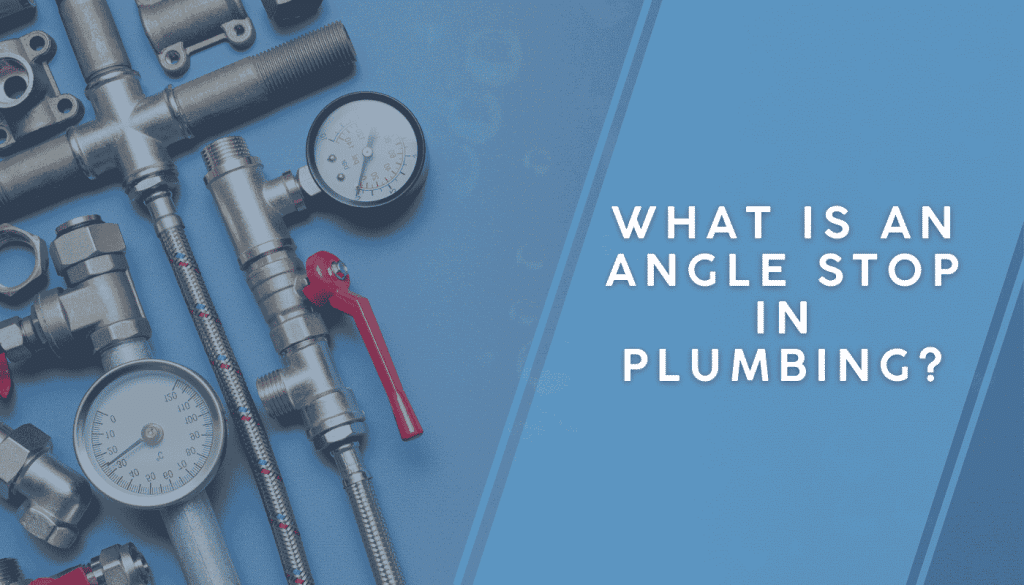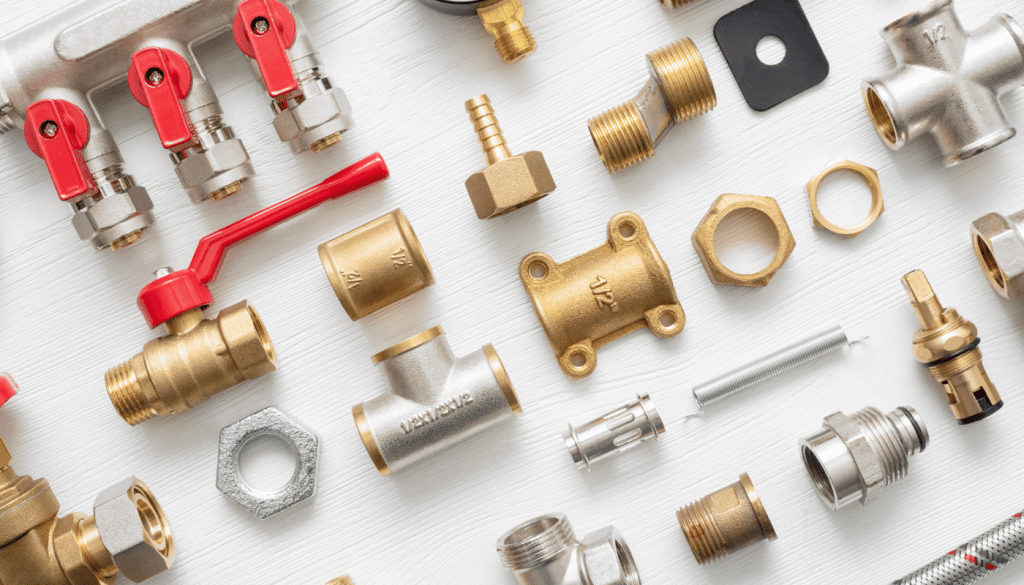
An angle stop valve is a small but powerful plumbing component that plays a crucial role in household water management. It is a shut-off valve with a 90-degree angle design, typically installed at the connection point of plumbing fixtures like sinks, toilets, dishwashers, and washing machines.
Knowing what is an angle stop in plumbing is essential for every homeowner because it allows you to isolate water flow to specific fixtures without turning off the main water supply. This makes maintenance and emergency responses much easier and faster. If you’re unsure what is an angle stop in plumbing systems, it’s time to become familiar with this must-know device.
Why Angle Stops Matter in Residential Plumbing
Understanding the importance of angle stops in everyday plumbing can save you time, money, and stress. Once you understand what is an angle stop in plumbing, you’ll see how invaluable it can be in emergency situations.
- Emergency water shut-off: If a fixture starts leaking, angle stops help prevent flooding.
- Fixture isolation: You can turn off water to just one appliance without affecting the entire home.
- Damage control: Prevents major water damage during repairs or emergencies.
- Convenience: Allows easy fixture replacements or upgrades without disrupting household water use.
Angle Stop vs. Straight Stop Valves
There are two main types of stop valves—angle and straight. Knowing the difference helps in choosing the right one. For those wondering what is an angle stop in plumbing, it’s important to distinguish it from similar devices.
- Angle stop: Used where the supply line comes from the wall. The valve redirects water flow at a 90-degree angle toward the fixture.
- Straight stop: Used when water lines come through the floor, flowing straight to the fixture.
Example:
- Toilet with wall plumbing = angle stop
- Sink with floor plumbing = straight stop
How Angle Stop Valves Work
Angle stop valves operate using either a quarter-turn or a multi-turn mechanism. Understanding what is an angle stop in plumbing includes knowing its internal operation.
- Quarter-turn valve: Turns 90 degrees to open or close, quick and easy to use.
- Multi-turn valve: Requires several turns of the knob, often older or more traditional style.
- Compression seals: Most use compression to form a watertight seal around the pipe.
Common Applications of Angle Stop Valves
In residential plumbing systems:
- Toilets
- Bathroom and kitchen sinks
- Dishwashers
- Washing machines
In commercial plumbing systems:
- Water line isolations during routine maintenance
- Emergency shut-off points
If you’re asking what is an angle stop in plumbing and why it matters, consider how these applications allow targeted shutoffs during repairs.
Different Types of Angle Stop Valves
Understanding different types of valves helps ensure proper application. It’s another way to better grasp what is an angle stop in plumbing when faced with various options.
- Angle ball valve: Quarter-turn valve for fast shut-off
- Multi-turn angle valve: Traditional design, requires multiple rotations
- Ceramic disc angle valve: Offers precise flow control and longer durability
- Mini angle valve: Ideal for tight spaces or minimalist setups
- 2-way and 3-way valves: Used to direct water to multiple fixtures
- Washing machine angle valves: Specifically built to handle high-pressure washing machines
- Thermostatic radiator valve: Regulates temperature in heating systems
Pipe Connection Types for Angle Stop Valves
- Compression angle: Most common in homes, needs ferrule and nut to seal copper or PEX
- Sweat angle: Soldered to copper pipes, permanent and leak-proof
- CPVC angle: Designed for CPVC pipes, uses solvent cement
- FIP (Female Iron Pipe): Threads onto male threaded pipes
- Push-fit angle: Tool-free installation for copper, PEX, or CPVC, though less reliable
Learning what is an angle stop in plumbing includes knowing which pipe connection method suits your setup.
Materials Used in Angle Stop Valves
Different materials offer different levels of durability and compatibility:
Brass valves (most common)
- Corrosion-resistant and durable
- Signs it needs replacement: Tarnish, discoloration, or leaks
Copper valves
- Also corrosion-resistant
- Signs: Green patina, loose fittings, or reduced water flow
Plastic valves
- Budget-friendly but less durable
- Signs: Warping, cracking, discoloration
Chrome-plated brass
- Adds aesthetic appeal with added corrosion resistance
PEX-compatible valves
- Specifically designed for use with flexible tubing systems
Material selection is a key aspect of understanding what is an angle stop in plumbing and ensuring long-term reliability.
How to Identify a Failing Angle Stop Valve
Be proactive—watch for these red flags:
- Leaks around the valve body
- Difficulty turning the valve handle
- Corrosion or visible damage
- Reduced water pressure to the connected fixture
- Drips around the compression nut or stem
Noticing these issues means it’s time to revisit what is an angle stop in plumbing and consider timely replacement.
When and Why to Replace an Angle Stop Valve
Angle stop valves generally last 8–10 years. Replace when:
- They become hard to turn
- They start leaking
- They’re made from low-quality materials
- You’re upgrading to modern fixtures or bathroom fittings
Use quarter-turn valves for better durability and faster emergency shut-off. Knowing what is an angle stop in plumbing also means knowing when to update outdated parts.
Choosing the Right Angle Stop Valve for Your Needs
Key considerations before buying:
- Fixture type and application
- Location of the pipe: wall or floor
- Match valve material to plumbing systems
- Understand pressure and temperature ratings
- Ensure compatibility with pipe connection types like compression angle or FIP
The more you understand what is an angle stop in plumbing, the easier it is to make the right purchase.
Professional Angle Stop Installation & Replacement
Though some DIYers might attempt installation, professional help is often the safer, more effective choice.
At Barney’s Plumbing & Sewer Services, we:
- Ensure leak-free, code-compliant installation of angle valves and stop valves
- Inspect for proper sizing and compatibility with fittings and accessories
- Replace outdated valves with high-quality brass or copper options
Whether you’re upgrading faucets, preventing emergency water flow issues, or installing new plumbing lines, we provide clean, reliable solutions.
Final Thoughts on Angle Stop Valves
Knowing what is an angle stop in plumbing empowers homeowners to better manage their plumbing systems. These small fixtures are critical in emergency shut-offs and everyday plumbing maintenance.
With regular inspections and timely replacements, you can avoid major leaks, improve safety, and extend the life of your bathroom and kitchen plumbing.
Trust Barney’s Plumbing & Sewer Services for professional angle stop replacements and plumbing support for everything from pipe connection types to multi-turn angle upgrades.

Why Choose Barney’s Plumbing & Sewer Services?
Barney’s Plumbing & Sewer Services may have launched in 2020, but our expert plumbers bring decades of industry experience with them. We’ve handled countless plumbing installations, repairs, and replacements across residential and commercial properties.
As a proud family-owned business, we treat every customer like family—offering honest recommendations, transparent pricing, and friendly service with every visit. It’s this commitment to customer satisfaction that has made us a trusted name in plumbing throughout the region.
We go the extra mile to keep you safe and informed. Before your scheduled appointment, we’ll send a photo of your licensed technician so you know exactly who’s arriving. Whether you need help with a single valve or a complete upgrade of your plumbing systems, we’re here for you.
Call us now at (253) 498-5434 to get your free quote and let Barney’s Plumbing & Sewer Services handle your plumbing needs with precision and care.

